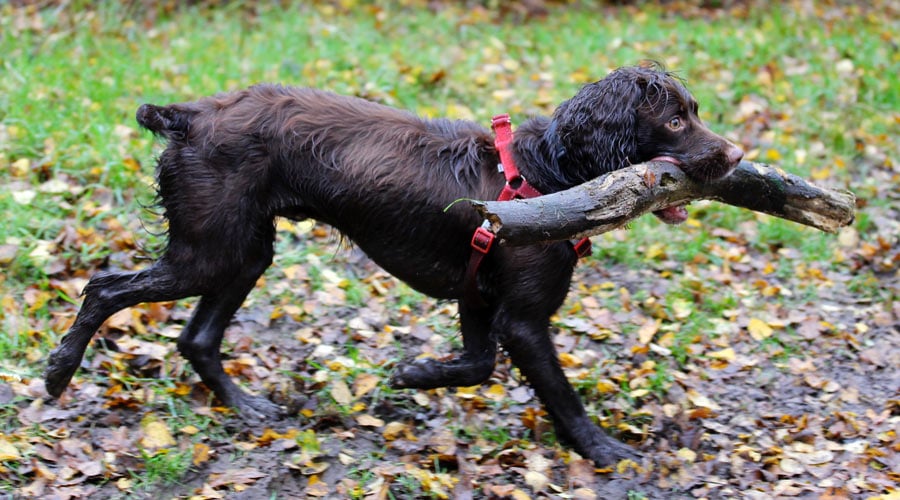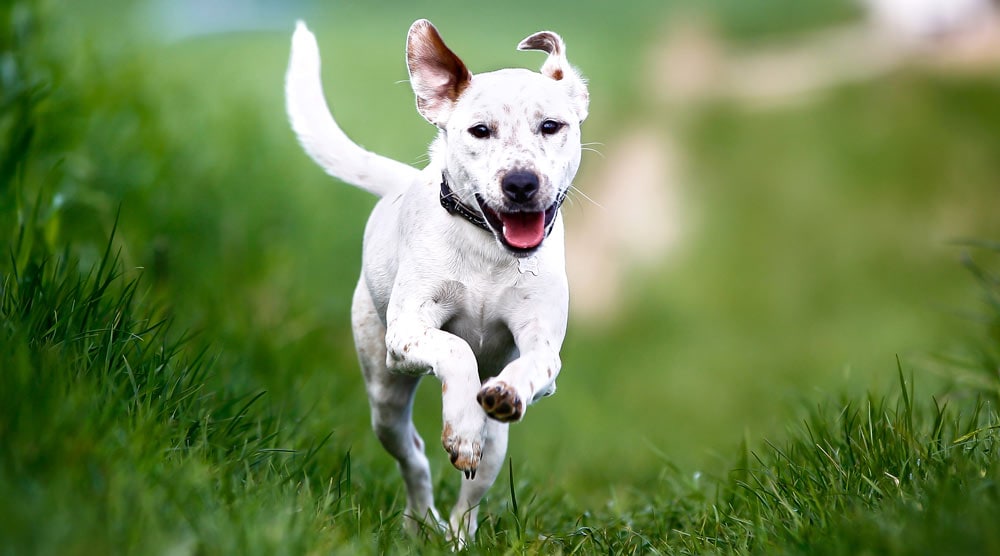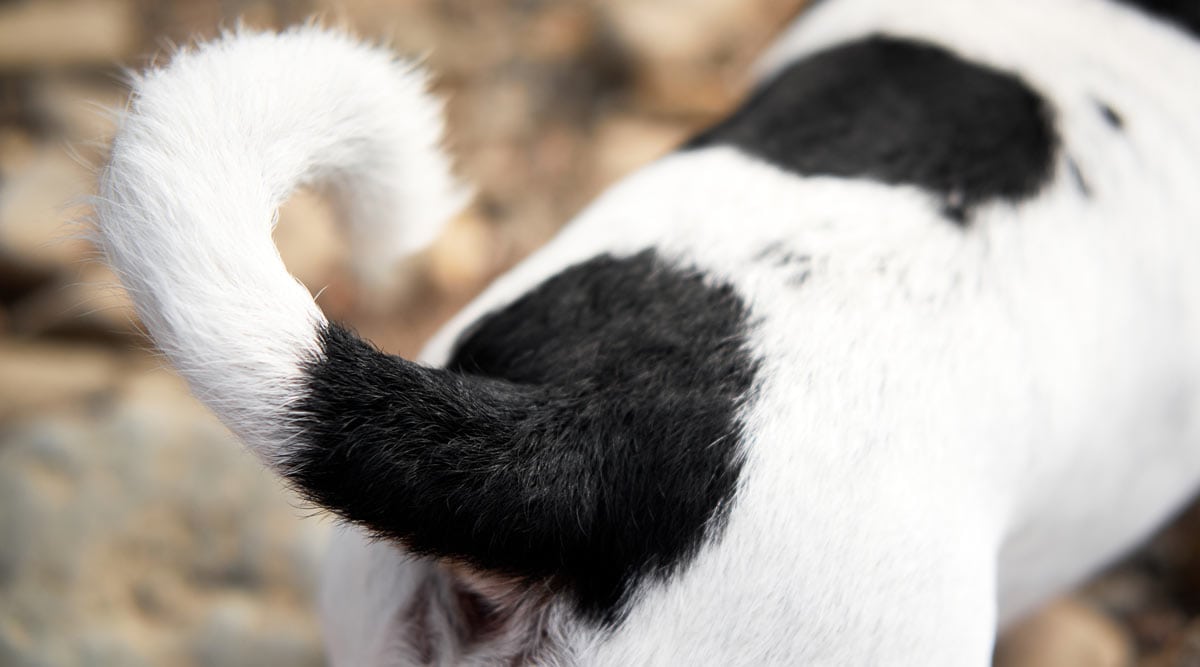Why do dogs have tails? They’re not just cute appendages! Tails help dogs move, communicate, and even stay warm.
In this article, we’ll discuss the reasons why dogs have evolved to have tails. We’ll also look at how dogs use tails for communication and how different tail types can affect their abilities.
Contents

The Quick Answer…
- Dog tails serve several functions: aiding in movement and balance, communicating emotions, spreading pheromones, and providing warmth.
- The tail is an extension of the dog’s spine, composed of vertebrae, cartilage, muscles, and nerves.
- While most dog breeds have tails, some naturally have short or ‘bob’ tails due to a specific gene mutation. This includes breeds like Welsh Corgi and French Bulldog.
- Tail docking, a practice of cutting off a puppy’s tail, is an unethical procedure that causes pain and hinders communication.
- Dogs can control their tail movements but mostly, tail movement is an unconscious response to their environment.
Why Do Dogs Have Tails?
There’s nothing better than being greeted by your dog’s helicopter tail. But dog tails are used for much more than just saying “hello!”
There are three core reasons why dogs have evolved tails:
- To assist with movement
- To assist with communication
- To maintain warmth
Let’s take a closer look at how a tail helps with each of these categories.
1. Tails Help With Movement
When your dog is zipping around the yard, have you noticed how their tail changes direction when they turn? This hints at one of the core reasons why dogs have tails: to assist with fluid movement.
When your dog wants to change direction quickly, their tail swings towards the new direction. It serves as a counterweight to the dog’s body, helping them turn sharply without tumbling over. Without the tail being thrown to the side, the rear legs would “want” to continue in a straight line, which would make turning much more difficult.
Some dog tails are more effective for turning than others. Sighthounds, for example, have whip-like tails that come in handy for quick turns when they’re running at high speeds. Think of the tail as a rudder guiding their movement.
And speaking of rudders, tails can also help the dog to steer while swimming. Breeds that are strong swimmers, such as retrievers, have tails that are particularly effective for this.
2. Tails Assist With Balance
The tail doesn’t just spring into action when your dog is sprinting or turning; it plays a key role in maintaining balance.
Let’s say your dog leans one way; their tail will instinctively move the other way to keep them steady. This balancing act comes in handy when they’re walking on uneven surfaces or narrow walkways.
However, the tail isn’t as important when walking in a straight line or when the dog is standing still. This is possibly why it’s also evolved as a tool for communication.
3. Tails Are Vital for Communication
Beyond balance and movement, the tail serves as a complex communication tool. By modifying tail position, stiffness, wag speed, and even wag direction, dogs can communicate a whole range of nuanced emotions.
Here are a few examples:
- A relaxed tail wagging at a medium speed could mean your dog is happy.
- A tail held down with smaller, slower wagging might indicate anxiety or fear.
- A tail held up shows alertness or confidence. When combined with a fast, vibrating wag, it could also mean defensiveness.
- Most importantly, a wagging tail doesn’t always mean the dog is happy to be approached!
Tails are often easily visible to other dogs, making them the perfect communication tool. Some dogs have even evolved to have white tail tips for clearer communication.
But remember, tail behavior is just one part of canine body language. Always look at your dog’s overall body posture and facial expressions to get a complete understanding of what they might be trying to tell you.
Learn More: How to Read Dog Tail Meanings
4. Tails Can Spread Pheromones
Did you know that dogs also communicate through smell? They possess anal glands that release pheromones carrying their unique scent. When your dog wags their tail, these glands contract, releasing this odour.
The tail also acts as a fan, dispersing the scent further into the air. This might be why a confident dog holds their tail erect—to spread their scent far and wide—while a scared dog keeps their tail down, limiting their scent dispersion.
You can’t rely on tail position alone to judge a dog’s confidence though. “An insecure dog that’s trying to appear more threatening may also hold their tail erect, because they are worried about the situation,” says dog trainer Rebecca Morello. “This is why it’s essential to assess the dog’s overall body language, rather than relying on just the tail.”
5. Tails Provide Warmth
In some breeds, tails serve as the perfect cozy blanket. Breeds with thick, bushy tails like the Siberian husky often use their tails to cover their noses when it’s chilly. It’s a built-in warmth feature that adds to the long list of reasons why dogs have tails.
What Are Dogs’ Tails Made Of?

Dog tails come in a huge range of shapes, sizes, and appearances. Tails can be broadly categorised into the following tail types:
- Corkscrew tails. Breeds such as pugs and certain types of bulldogs have short, curly tails that look a bit like coiled springs.
- Sickle tails. These are long, bushy tails with a curve that are found on breeds such as the Siberian husky and chihuahuas.
- Otter tails. These are rounded, thick tails that are found on breeds such as Labrador retrievers. They are particularly effective at acting as a rudder when swimming.
- Whip tails. These are thinner than otter tails and have a taper at the end. Whip tails are found on breeds such as dachshunds and Dalmatians.
- Bob tails. These are naturally short, stub-like tails found on breeds like Pembroke Welsh Corgis and Australian Shepherds.
No matter their outward appearance, all dog tails share a similar anatomy. It’s essentially an extension of the spine, so its core structure is a series of vertebrae—on average, about 20, though the smallest dog tails might only contain around 6.
Between each of these vertebrae, you’ll find a layer of cartilage acting as a cushion. This is why dogs’ tails can sway so smoothly when wagging. Attached to these bones are the tail muscles, which, under the direction of pairs of nerves, allow your dog to control the height, direction, and wag speed of their tail.
Related Article: Can Dogs Feel Their Tails?
The History and Evolution of the Dog’s Tail
Did you ever wonder how the dog’s tail came to be what it is today? Initially, tails evolved to aid in movement—primarily to maintain balance and assist with sharp turns, which were critical skills for hunting or escaping predators.
However, because tails were easily visible and didn’t see much action when a dog was standing still, they gradually became a tool for communication. After all, dogs have excellent eyesight for detecting movement, making tails a far superior communication tool than facial expressions.
Over millennia, this tail body language has evolved to be complex and nuanced. A well-socialised dog can instantly understand what another dog is feeling, and how strongly they are feeling it, by looking at the tail (combined with other body language signals). Dogs really are amazing!
Do All Dogs Have Tails?
Dogs can vary in appearance more than any other type of animal. So, while most dogs are indeed born with tails, some breeds naturally have very short ones.
Called bob tails, these petite appendages result from a mutation in a specific gene. Certain breeds, like the Welsh Corgi, French bulldog, English bulldog, and Boston terrier, are known for having these naturally tiny tails.
It’s crucial to note that bob tails are not the same as docked tails, which have been shortened or removed through a surgical procedure. This practice is considered unethical and harmful to the animal, and we firmly stand against it.

How Do Dogs With No Tails Communicate?
Some dogs are naturally born with very short tails. And in some instances, owners opt to dock a puppy’s tail, particularly in working breeds—though, as mentioned earlier, this practice is regarded as unethical.
Lacking a lengthy tail makes it challenging for these dogs to communicate with their peers. They still have access to other forms of body language, such as body posture, facial expressions, and averting their gaze. But without the easily visible movement of a wagging tail, other dogs may find it more difficult to interpret what they are trying to say.
Indeed, an observational study has shown that dogs with very short (or no) tails are twice as likely to get into an aggressive interaction with another dog. This underscores why tail docking should be avoided unless it’s the only option to treat an injured tail.
Why Do Some Dogs Have Their Tails Docked? (and Why This Is Unethical)

Some dog owners choose to have their pets’ tails docked—a procedure that involves removing a portion of the tail, often without anesthesia. This practice, which we firmly believe is unethical, is typically justified by two reasons.
First, there’s the argument that working breeds or hunting dogs that frequently navigate dense undergrowth may injure their long tails. The second reason is merely aesthetic: the owner might prefer the look of a docked tail.
However, there’s no conclusive evidence supporting the claim that tail docking reduces the risk of injuries in dogs. What we know for certain is that the procedure causes intense pain and could potentially affect the dog’s response to pain later in life.
Docking also deprives a dog of a crucial communication tool. As previously discussed, dogs without tails have more difficulty communicating with other dogs, which can increase the chances of aggressive interactions.
At The Dog Clinic, we stand strongly against tail docking and believe that it should never be performed. We’re pleased to see that more countries, including the UK, Australia, Germany, and many others, are banning the practice.
The only exception to this stance is if there’s a medical necessity for tail amputation—like in cases of severe trauma or a broken tail. In such instances, the amputation procedure is performed by a veterinarian under general anesthesia, and the dog is given pain-relieving medication afterward to minimize discomfort.
Frequently Asked Questions
Why Do Dogs Chase Their Tails?
Dogs might chase their tails for several reasons. Some dogs engage in this behavior simply because it’s fun. However, if your dog is persistently chasing its tail, it might signal a lack of physical and mental stimulation.
Tail chasing could also be a symptom of a compulsive behavior disorder or other medical conditions. If your dog is regularly chasing or biting its tail, it’s advisable to contact your vet for a check-up. Once you’ve ruled out medical causes, we recommend getting in touch with a canine behaviorist.
While you’re waiting for a diagnosis, try to gently and calmly distract your dog when they are tail chasing. This might help to break the habit.
What Do Different Tail Wags Mean?
The way a dog wags its tail can provide clues about its emotional state.
Generally, a high tail position indicates alertness or confidence, while a neutral or relaxed position suggests that the dog is at ease. If the tail is held low, it might mean the dog is feeling anxious, stressed, or fearful.
The speed and magnitude of the wag can also provide insights. Rapid or vigorous wagging often denotes strong emotions, while tentative wagging might suggest the dog is uncertain about the situation.
Interestingly, the direction of the wag also holds meaning: wagging to the right is associated with positive emotions, while left-side wagging often corresponds to negative feelings. For more information, you can refer to our guide “Why Do Dogs Wag Their Tail?“
Do Dogs Have Full Control of Their Tails?
Dogs do have the ability to consciously control their tail movements. However, like human facial expressions, most tail movements occur unconsciously in response to the dog’s environment.
For example, just as we might unconsciously smile when we’re happy, a dog’s tail will react instinctively to various situations. The dog usually doesn’t consciously decide how to wag their tail.
Summary
In this article, we’ve discussed dog tails and why they are so important for our canine friends. Tails affect everything from movement to communication, so they are essential for your pet’s health and well-being.
Do you have any questions about why dogs have tails? Please let us know in the comments section below.




